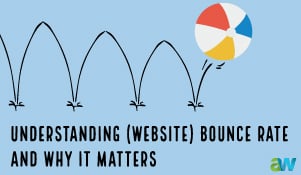Maintaining a website today is so much easier than in years' past, as most sites (and certainly those professionally developed) utilize a content management system (CMS). Content management systems such as Aurora CMS, Wordpress, Drupal and others, enable companies to make updates, additions and edits to their sites in-house, and without a need for much technical experience. With that said, why then, do so many sites get stale?
Often, we find that companies put a great deal of effort and attention into rebuilding their sites at the point that process happens. Once the site has been launched, though, attention shifts to other priorities, as the company figures that they are 'good for a while' on the web front. So, with that in mind... what updates should be done regularly, and what needs to be done on a larger and less frequent scale? Here are a few general guidelines:
- Content. No one likes a stale website, and content is the way to keep your website inviting to visitors. Content comes in many shapes and sizes: video, images, blog posts, landing pages, surveys, and much more. There is no point in changing content just to change it, but you do want to be sure that your website always contains current, correct information about the firm and services you offer. Don’t forget to delete old content, or, better yet, repurpose it. Frequency: Ongoing, as needed.
- Image updates. Atlantic Webworks recommends updating the key images on your website (such as header images) every 4-6 months. For images tied to content on your home page (at the top of your home page, or in feature areas), updates need to be made in conjunction with the content they accompany. If you have a high-traffic site, you will want to update them much more frequently. Always be sure to check the site after making updates, to ensure that there have been no issues in uploading, or distortion due to sizing. Frequency : Ongoing, as needed.
- Find and Fix Broken Links. The one downside to having the ability to edit your own site is that you are also able to (inadvertently) make mistakes without realizing it. (Many people make site updates and forget to view the site after doing so, to confirm there were no problems.) One of the most frequent mistakes that are made is inserting a link that does not work. This can be done by copying and pasting, and missing part of the URL; leaving off the 'https://', etc. If a visitor clicks on a link and the link goes to a non-existent page with a 404 error, then your visitor is likely to jump. Always double check any links you put on your website. And if you are looking for a quick way to find links that may be broken, Ahrefs.com and use Site Explorer to find broken external links. Frequency : Quarterly.
- Optimize Your Site’s Pages. When your website is first built, your web development firm should have optimized your (then current) page content. However, over time, as you add and remove pages, update content, video and images, the optimization will be impacted; especially as the search engines change their algorithms for how they evaluate your content. Depending on how competitive your industry is, you may want to contract monthly SEO services. At a minimum, even for companies in less competitive markets, we recommend a bi-annual SEO update. Frequency: depends - monthly, quarterly or bi-annual.
- Keep an active SSL Certificate. SSL certificates designate that your website conforms to standard secure protocol when connecting between a browser and a server (where the site is housed). When you look at a URL, you will see an “s” after http; this designates your website as being 'secure'. Now the standard, if your site does not have an SSL certificate, Google will flag you and when visitors attempt to visit your site, a warning will appear on their screen advising them that your site is not secure. SSL Certificates are generally registered for a year at the time (although multi-year certificates can also be purchased). Certificates generally will need to be installed by your web firm (or hosting company, if you are using a hosted template website). Frequency : Annual.
These are the basic items that you should, at a minimum, keep up to date on your site. As for bigger changes, we recommend a website redesign every 3-4 years. The Internet is always changing and so are the technologies utilized, best practices, and search engines. A website redesign will help to keep your website up-to-date with both technology and search engine algorithms.








Leave a comment